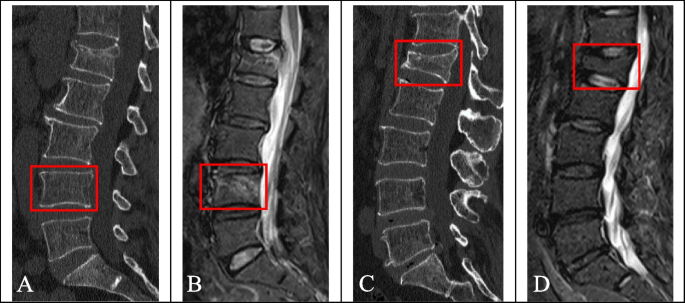 Spinal compression fractures can be severe and have a significant impact on an individual’s quality of life. Understanding the origins, symptoms, diagnosis, and treatment options for spinal compression fractures is critical for optimal care and recovery, regardless of whether they are caused by osteoporosis, trauma, or other diseases.
Spinal compression fractures can be severe and have a significant impact on an individual’s quality of life. Understanding the origins, symptoms, diagnosis, and treatment options for spinal compression fractures is critical for optimal care and recovery, regardless of whether they are caused by osteoporosis, trauma, or other diseases.
This article will go over all you need to know about spinal compression fractures, including its causes, symptoms, diagnosis, treatment choices, and preventative measures.
Understanding Spinal Compression Fractures.
Spinal compression fractures occur when one or more vertebrae collapse or become compressed as a result of trauma or a compromised bone structure.
These fractures can cause discomfort, deformity, and mobility problems, limiting an individual’s ability to conduct daily activities and jeopardizing their overall health.
While osteoporosis is a leading cause of spinal compression fractures, other risk factors include trauma, cancer, and certain medical diseases that impair bone health.
Causes and Risk Factors
Osteoporosis
It is the most common cause of spinal compression fractures. As bone density declines with age, the risk of fractures, notably compression fractures in the spine, rises dramatically.
Trauma
Accidents falls, and other traumatic traumas can cause compression fractures in the spine, especially in young people with healthy bone density. High-impact activities or sports injuries can also lead to spinal compression fractures.
Cancer
Cancer metastasis to the spine can weaken the vertebrae, increasing the risk of compression fractures. Tumors growing within or near the spine can put a strain on the vertebrae, causing collapse or compression fractures.
Other Medical Conditions
Osteomalacia, Paget’s disease, and spinal infections all reduce bone strength and raise the risk of spinal compression fractures.
Symptoms
The symptoms of spinal compression fractures vary according to the severity of the fracture and the underlying etiology. Common symptoms include:
Back discomfort
Persistent, localized discomfort in the back that is aggravated by movement or weight-bearing activities.
Compression fractures
It can reduce height due to spinal collapse, resulting in a stooped or slumped posture.
Limited Mobility
Pain and structural changes cause a decrease in range of motion and mobility, particularly in the spine.
Neurological Symptoms
Compression fractures can compress spinal nerves, causing numbness, tingling, paralysis, or loss of bowel or bladder control.
Diagnosis
Spinal compression fractures are often diagnosed using a combination of medical history, physical examination, and imaging investigations, such as:
X-ray
X-rays can show spinal compression and structural changes in the spine, like wedge-shaped or flattened vertebrae.
MRI (Magnetic Resonance Imaging)
Its scans provide detailed images of the spinal structures, allowing healthcare personnel to determine the extent of vertebral compression as well as any related soft tissue injuries or spinal cord compression.
CT (Computed Tomography) Scan
CT scans can be used to obtain detailed images of the spine and evaluate the integrity of the vertebral bones, especially in cases of trauma or suspected fractures.
Treatment Options
The treatment for spinal compression fractures seeks to alleviate pain, restore spinal alignment, and promote recovery. Treatment options could include:
Conservative management
Nonsteroidal anti-inflammatory medications (NSAIDs), analgesics, and muscle relaxants may be used to treat pain and discomfort.
Rest and activity modification can help relieve stress on the spine and improve healing. It is recommended that you avoid activities that aggravate your discomfort or put you in danger of future injury.
External bracing or orthotic devices can be utilized to support the spine and stabilize vertebral fractures, especially in osteoporotic compression fractures.
Minimally Invasive Procedures
Vertebroplasty is a procedure that includes injecting bone cement into a fractured vertebra to stabilize it and ease discomfort. This minimally invasive technique, conducted under fluoroscopic guidance, can give quick pain relief for compression fractures.
Kyphoplasty is a technique similar to vertebroplasty in which a balloon-like device is inserted into the broken vertebra to create room before bone cement is injected. Kyphoplasty can restore vertebral height and cure spinal abnormalities caused by compression fractures.
Surgical Intervention
Spinal Fusion
In severe cases of spinal instability or neurological damage, surgery may be required to stabilize the spine and restore vertebral alignment. Spinal fusion surgery combines adjacent vertebrae using bone grafts and instrumentation to improve spinal stability.
Prevention
Preventing spinal compression fractures frequently entails lifestyle changes and proactive actions to promote bone health and limit the chance of falls or injuries. The vital preventive strategies are:
Bone Health
A well-balanced diet high in calcium and vitamin D, regular weight-bearing exercise, and avoiding smoking and excessive alcohol use can all help to retain bone density and strength.
Fall Prevention
To reduce the risk of falls and traumatic injuries, implement safety measures such as minimizing tripping hazards, installing handrails and grab bars, wearing suitable footwear, and participating in balance exercises.
Osteoporosis Management
Treating underlying medical disorders like osteoporosis with medication, nutritional supplements, and lifestyle changes can help prevent bone loss and lower the risk of compression fractures.
Wrapping It Up
Spinal compression fractures can have severe consequences for a person’s health and well-being, compromising mobility, function, and overall quality of life. Understanding the origins, symptoms, diagnosis, and treatment options for spinal compression fractures allows healthcare practitioners and patients to collaborate on developing tailored treatment programs that target the underlying cause of the fracture and improve recovery results.
Individuals suffering from spinal compression fractures can restore mobility, relieve pain, and enhance their overall quality of life because of technological advancements and a multidisciplinary approach to therapy. Early detection, timely intervention, and continued management are critical for attaining positive results and reducing the impact of spinal compression fractures on long-term health and function.

